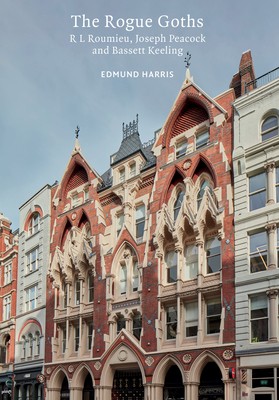
- We will send in 10–14 business days.
- Author: Edmund Harris
- Publisher: Historic England
- ISBN-10: 1835538479
- ISBN-13: 9781835538470
- Format: 17.4 x 23.9 x 0.9 cm, minkšti viršeliai
- Language: English
- SAVE -10% with code: EXTRA
Reviews
Description
Part of a generation that came to prominence in the 1860s, the 'rogue architects' are a byword for Victorian Gothic at its most wayward and flamboyant. Their work ranges from town halls to country houses and from hotels to churches. It has drawn much attention, both from contemporary observers and 20th century commentators, such as Harry Goodhart-Rendel (who coined the term), Ian Nairn and John Summerson. But much about the rogues' architecture - its inspiration, their aims, why they built where and how they did and why it caused such a stir - has been poorly understood until now. Based on extensive primary research and presenting a lot of material never published before, this book presents comprehensive studies of three of rogue architecture's most important exponents - Robert Lewis Roumieu, Joseph Peacock and Bassett Keeling. Their careers, although all very different, provide valuable insights into a rich and complex episode in British architectural history. These studies are prefaced by an introductory chapter, which places them in context and looks at the numerous other architects who stand comparison with them, not only throughout Britain but also in France and America. It is handsomely illustrated with new photographs and archive material, including drawings from the RIBA Collection.
EXTRA 10 % discount with code: EXTRA
The promotion ends in 22d.19:19:46
The discount code is valid when purchasing from 10 €. Discounts do not stack.
- Author: Edmund Harris
- Publisher: Historic England
- ISBN-10: 1835538479
- ISBN-13: 9781835538470
- Format: 17.4 x 23.9 x 0.9 cm, minkšti viršeliai
- Language: English English
Part of a generation that came to prominence in the 1860s, the 'rogue architects' are a byword for Victorian Gothic at its most wayward and flamboyant. Their work ranges from town halls to country houses and from hotels to churches. It has drawn much attention, both from contemporary observers and 20th century commentators, such as Harry Goodhart-Rendel (who coined the term), Ian Nairn and John Summerson. But much about the rogues' architecture - its inspiration, their aims, why they built where and how they did and why it caused such a stir - has been poorly understood until now. Based on extensive primary research and presenting a lot of material never published before, this book presents comprehensive studies of three of rogue architecture's most important exponents - Robert Lewis Roumieu, Joseph Peacock and Bassett Keeling. Their careers, although all very different, provide valuable insights into a rich and complex episode in British architectural history. These studies are prefaced by an introductory chapter, which places them in context and looks at the numerous other architects who stand comparison with them, not only throughout Britain but also in France and America. It is handsomely illustrated with new photographs and archive material, including drawings from the RIBA Collection.


Reviews